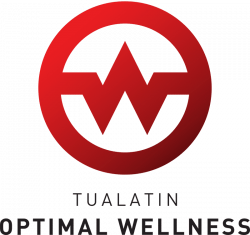Headaches and Migraines
Types of Primary Headaches
A primary headache is a type of headache not directly related to or due to another medical condition. There are four commonly reported types of primary headache including:
Tension headaches
Tension headaches, the most common type of headache, occur due to increased stress, insufficient sleep, and tension within the muscles. It is most often accompanied by bilateral pain in the head (occurring on both sides) and is persistent pain. Tension headaches are often mild in severity and are relieved by over-the-counter medication. Routine activities like bending over to pick something up off of the floor or walking may worsen tension headaches.
Cluster headaches
Cluster headaches, the most severe type of primary headache, are accompanied by intense stabbing pain or a burning sensation near the eyes or behind one eye without changing sides. These types of headaches present with severe pain on one side of the head, a throbbing sensation, and may cause swelling of the affected eyelid, swelling in the forehead, or congestion.
Migraines
Migraines often present with moderate to severe pain, nausea and vomiting, a pounding or throbbing pain that can last several days, as well as increased sensitivity to noises, lights, and smells. People living with migraines often experience significant mood changes due to the severity of symptoms.
Daily persistent headaches
Daily persistent headaches are a constant type of headache, often producing pain on both sides of the head, with little to no relief from medication.

Secondary Headaches
A secondary headache is a type of headache directly related to or caused by another medical condition such as:
- Hypertension (high blood pressure)
- Diseases of blood vessels in the brain
- Frequent overuse of medication
- Infection
- Sinus congestion
- Trauma
- Whiplash injuries from a vehicle accident
A secondary headache is a type of headache directly related to or caused by another medical condition such as:
- A headache accompanied by weakness, sudden imbalance, paralysis, difficulty with speech, confusion, seizures, and vision changes
- A headache with shortness of breath, a rash, fever, or stiff neck
- Headaches accompanied by nausea and vomiting that do not get better with medication
- A headache occurring after a type of trauma or injury to the head including blunt force trauma to a whiplash injury
What causes a headache?
A headache is a common type of medical condition affecting millions of people around the world and is frequently the cause of missed school, work, or social activities with friends and family. Headaches often cause pain in the face and head that varies in severity depending on the type of headache and cause.
Headache pain occurs as a result of signals communicating with the brain, blood vessels, and the thousands of nerves surrounding the brain. Though the exact mechanism is not known, nerves within the head that control muscles and blood vessels are activated, causing irritation that sends painful sensations to the brain and throughout the affected area.
What triggers a headache or migraine?
Headaches may be caused by many different contributing factors or triggers, such as:
- Alcohol
- Changes in diet
- Inadequate sleep
- Whiplash injury
- Dehydration
- Emotional stress
- Anxiety, depression, or mood changes
- Medication overuse
- Poor posture, causing neck or back strain
- Changes in weather
- Pollen
- Traumatic injury
How are headaches treated?
Many physicians treat headaches with medication as a first-line defense. However, this can lead to medication dependence, overuse, or the body becoming immune due to prolonged use. Less conventional treatment for headaches, such as the below, may provide long-term relief through:
Counseling
This allows a person to learn healthy coping mechanisms and techniques in regard to stressful situations as well as help them learn ways to naturally reduce anxiety and depression.
Relaxation techniques
Yoga, meditation, or light exercise relieve tension and soothe the mind.
Chiropractic care
A chiropractor can naturally relieve pain through various methods, such as adjustments to reduce strain on targeted areas, education on lifestyle changes that can reduce headache frequency, massage therapy, and more.
Can a chiropractor help with headaches?
Chiropractic care offers a natural solution to many common health conditions like headaches and general aches and pains. Rather than masking symptoms with medication, the team at Tualatin Accident and Injury Chiropractic strive to identify the root problem and formulate an individualized plan of care to meet the needs, budget, and lifestyle of each patient.
Our team specializes in treating injuries related to automotive accidents like whiplash injuries, disc injury, or other disorders relating to the musculoskeletal system. If you or a loved one have been involved in an automobile accident but seems to be physically unharmed, you may have undetected injuries from the impact that will cause pain in the future.

